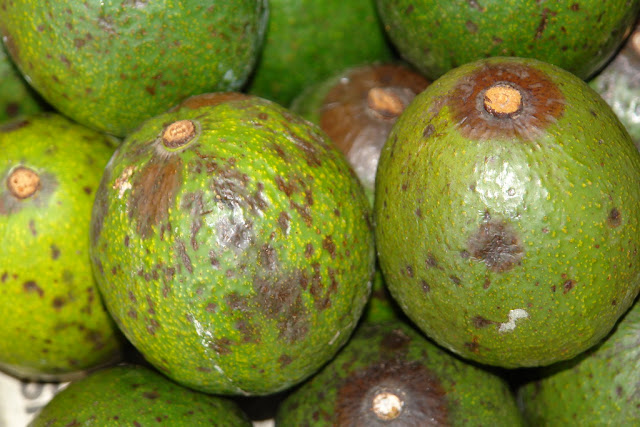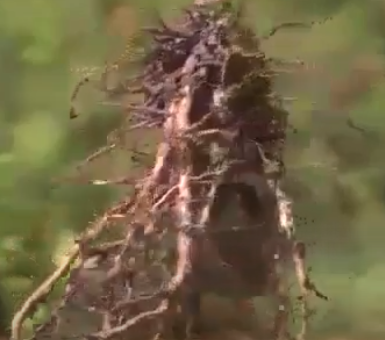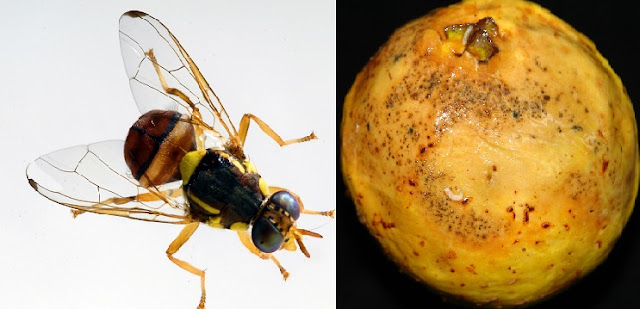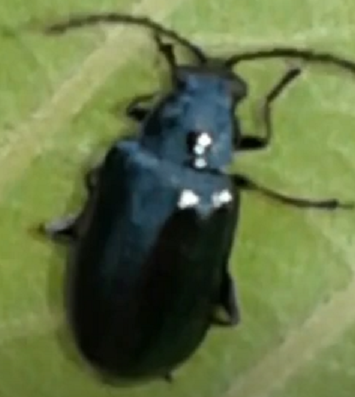Besides vitamins, the fruit is a rich source of minerals like Ca, iron and phosphorous Seeds of guava are a rich source of iron particularly.
Requirement of Climatic Condition for Guava Cultivation ;
1) Tropical and subtropical conditions are suitable for guava cultivation.
2) The favourable temperature for Guava cultivation is 15 to 30-degree celsius.
3) Guava crops can tolerate the drought but the young plants are susceptible to frost and drought conditions.
Soil Requirement for Guava Cultivation ;
1) Guava cultivation can be done under different types of soils. 2) The pH range between 6 to 7.5 is more suitable for its cultivation.
3) The pH range above 7.5 may cause the possibility of neck diseases in Guava fields.
Selection of Guava varieties ;
|
STATE
|
VARIETIES
|
|
ANDHRA PRADESH
|
Allahabad safeda, Lucknow 49, Anakapalli, Banarasi, Chittidar, Hafshi, Sardar, Smooth Green, Safed Jam, Arka Mridula
|
|
MADHYA PRADESH
|
L-49, Allahabad safeda, Gwalior-27, Hafshi, Seedless Chittidar
|
|
JHARKHAD
|
L-49, Allahabad safeda
|
|
KARNATAKA
|
Allahabad Safeda, L-49, Araka Mridula, Araka Amulya, Bangalore, Dharwar
|
|
ASSAM
|
Am Sophri, Madhuri Am, Safrior Payere
|
|
BIHAR & JHARKHAND
|
Allahabad Safeda, Apple Colour, Chittidar, Hafshi, Harijha, Sardar, Selection-8
|
|
MAHARASHTRA & GUJARAT
|
Nagpur seedless, Dharwar, Dholka, Kothrud, L-24, L-49, Nasik, Sindh
|
|
NORTH-EASTERN STATES
|
Allahabad Safeda, Sardar, Red Fleshed.
|
|
TAMIL NADU
|
Anakapalli, Banarasi, Bangalore, Chittidar, Hafshi, Nagpur Seedless, Smooth Green
|
|
UTTAR PRADESH
|
L-49, Allahabad Safeda, Lucknow Safeda, Apple Colour, Chittidar, Red Fleshed, Allahabad Surkha, Sardar, Mirzapuri Seedless, CISH-G-1, CISH-G-2, CISH-G-3
|
|
WEST BENGAL
|
L-49, Allahabad Safeda, Dudhe Khaja, Gole Khaja, Kabli, Baruipur, Chittidar, Harijha, Sardar
|
Propagation of Guava ;
1) At many places, guava is mainly propagated by seeds but there is a lower variation found among the plants if so multiplied.
2) It is advisable to multiply by vegetative methods like veneer grafting, patch budding, air layering, etc.
3) Veneer grafting has been found a very good method that gives 80% success.
4) Patch budding is an easy and successful method practised in north India
5) Air-layering is generally practised in south India.
Guava Planting ;
1) Plants are transplanted during the months of July-August at a distance of 6-7 metres with an optimum population of 280 plants per hectare.
2) Planting is done in the pits of 50 cm x 50 cm x 50 cm size dug all marked places.
3) Fill the pits with 20-25 kgs of FYM, 500 gms of SSP and one kg of neem Cake. If required treat the topsoil with any termiticide
Irrigation in Guava Orchard ;
1) The amount of irrigation given to guava fields depend upon the prevailing climatic conditions and types of soil
2) Normally the guava crop requires very little irrigation.
3) However young plants one to two-year-old requires plant requires 10 to 12 irrigation in a year.
4) When the guava orchard is in full fruit-bearing stage 2 to 3 irrigation must be given after the fruit set it will help in the improvement of fruit size and fruit quality.
Manuring in Guava;
1) For one or two years old guava plant 10-15 kg F.Y.M., 50 gm N 30 gm P2O5, and 150 gm K2O should be given.
2) These doses should be increased as per the age of the plant. eg for 6 years old plant 50 kg F.Y.M., 250 gm N, 150 gm P2O5, and 250 gm K2O will be required. Now, this dose should be applied constantly to further old plants.
3)The best time of application is the months of June and February.
Pruning in Guava Orchard ;
1) In guava, pruning is required to provide the plants with a strong framework.
2) No lateral shoots should be allowed to grow on the main stem up to the height of about 90 cm from the base. Three to four main branches are allowed to grow at this height only.
3) As the fruit is borne on new growth, heavy pruning of bearing trees increases fruiting.
4) All the dried and dead twigs should be removed from time to time.
5) Any shoot emerging Lower base of the plant should be removed at once.
Flowering and Fruiting in Guava;
1) In north India, flowering takes place three times a year i.e. March/April July/August and October/November.
2) Spring season flowering produces the mature crop during the rainy season.
3) Similarly, the rainy season flowering crops gives the crop during winter and October November flowering in the spring season.
4) Winter season crop is of better quality and fetches a good price in the market.
Disease Management in Guava ;
a) Anthracnose: (Gloeosporium psidii );
The major symptom of this disease is Sunken, dark brown to black coloured lesions appear on mature fruits which further may be covered in pinkish spores The lesions further may coalesce to form large necrotic patches on the surface of guava fruit
This disease majorly occur in moist warm weather which is further spread by a slash of water
Control; Spraying of guava trees with Bordeaux mixture 0.6 % / Copper oxychloride 0.2% well before the onset of monsoon may reduce the chances of the disease incidence.
b) Pseudocercospora Leaf Spot (Pseudocercospora psidii)
This disease can occur on leaves, Stem and Fruits of the Guava tree Symptoms of this disease are small circulars and subcircular dark brown lesions that appear on the plant surface with diffuse borders.
Control: Spraying copper oxychloride at 0.3 per cent can reduce the infection.
c)Wilt (Fusarium sp) :
This is a serious disease of guava trees. Guava wilt is sometimes encountered, especially in alkaline soils. The symptoms of guava wilting can be easily visualized by browning and wilting of the leaves, discolouration of the stem and later on the death of the branches along one side. Eventually, the infection girdles the entire stem and the whole plant may wilt. In some of the severe cases, the whole tree may die.
Control: wilt infection can be controlled by soil drenching with Brasicol and spraying of Bavistin (0.1%) around the roots and leaves at an interval of 15 days.
d) Guava rust (Puccinia psidii Symptom) ;
This disease can affect leaves, young shoots, inflorescence and fruit of the guava tree. The major symptoms are distortion, defoliation, stunted plant growth and mortality of plants under severe infection. The symptoms on the leaves can be visualized in the form of dark bordered, roughly circular brown lesions with yellow halos develop.
Control; Spraying of Rust fungicides on the tree, as soon as the favourable condition of disease development prevails. In addition to this proper cultural practices and sanitation may avoid the disease pressure.
Guava Insect – pest management ;
a)Guava fruit fly(Bactrocera spp.)
Adult and Maggot attacks on the ripening fruits of the plants and create a depression due to oviposition puncture on the fruit. Maggot converts the fruit pulp into a bad-smelling pulp.
Control; Spray dimethoate 30 EC 1ml/lit, two rounds at fortnight interval before the ripening of fruits, Collect and destroy the fallen infested fruits, summer ploughing will help to expose pupa.
b) Guava Weevil (Conotrachelus psidii )
Caterpillar bore in the fruit feed the pulp and seeds cause petrification and prematurity of the fruits. Deposition of larva excreta in the fruits causes fermentation.
Control; Spraying of malathion 50 EC 0.1% two rounds, once at the time of flower formation and next at fruit set, collect and destroy the damaged fruits of the plants.
c) Green Scale (Coccus Viridis ) ;
Leaves of the plant are covered by a sticky substance further it may have growth of sticky mould. The Nymph and adult of the insects suck the sap from the leaves. Leaves become yellow result in dropping of the plant leaves.
Control; prune and destroy the infested portion of the plant at the initial stage and apply the parasitoids like as Aneristis sp Coccophgagus cowperi, C. bogoriensis
Harvesting and yield ;
Fruits of guava cannot be stored for a long time after harvesting due to its short shelf-life of average 2-3 days. Therefore, units must be plucked as and when they ripen and also according to the demand market. Plucking extends over several weeks. The yield of about 500 to 600 fruits pant is obtained from Allahabad Safeda variety in Allahabad conditions.










